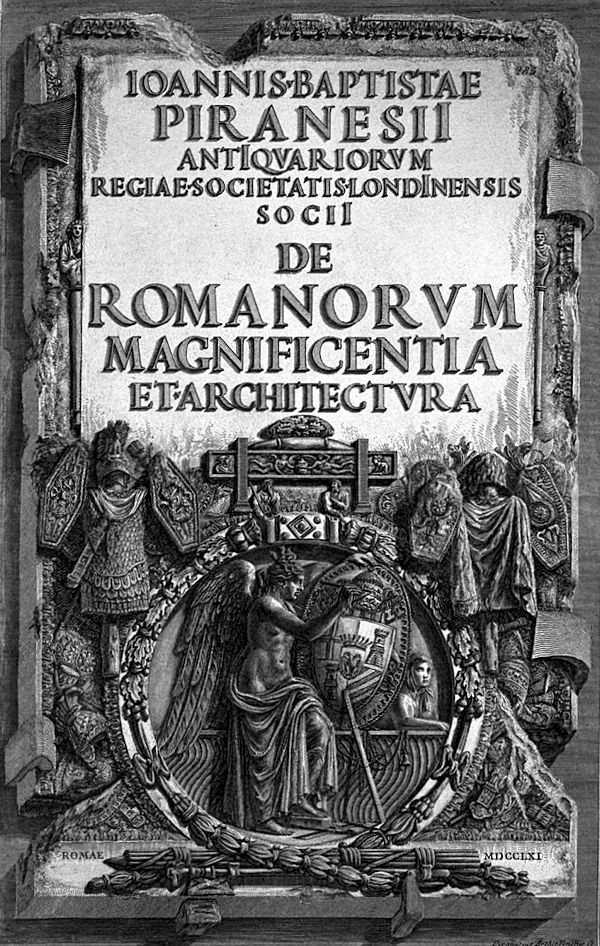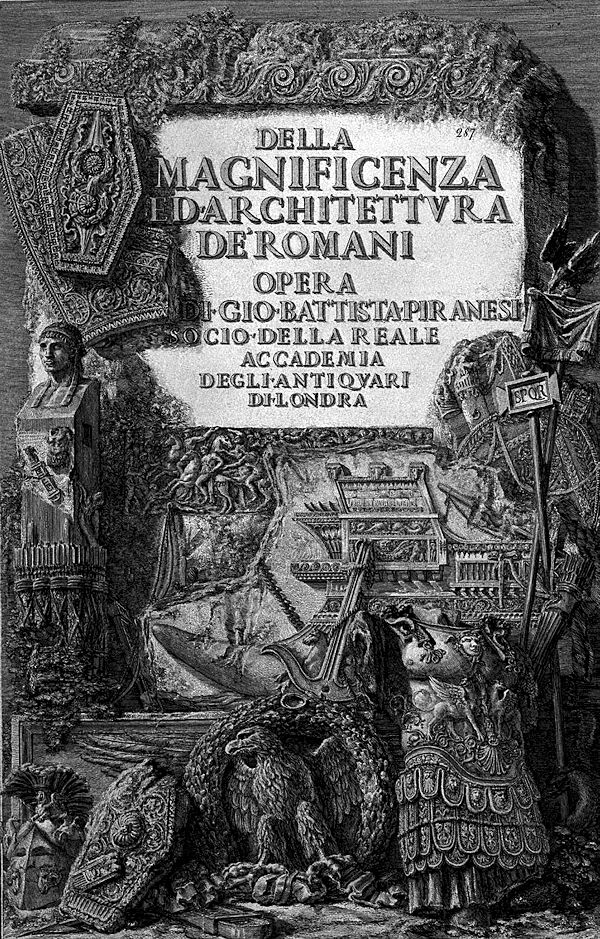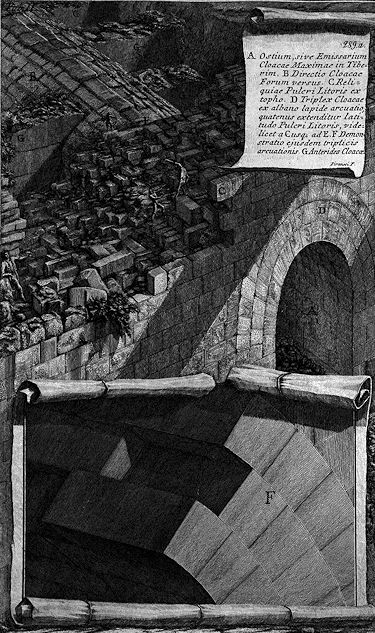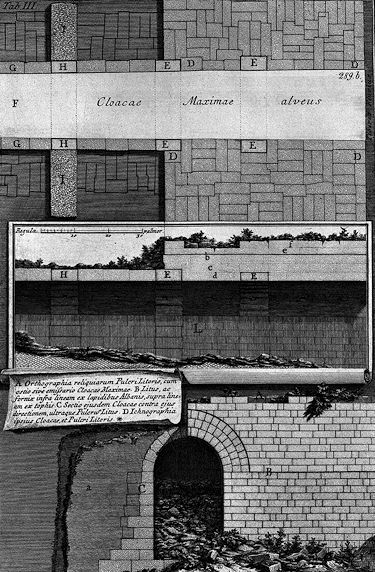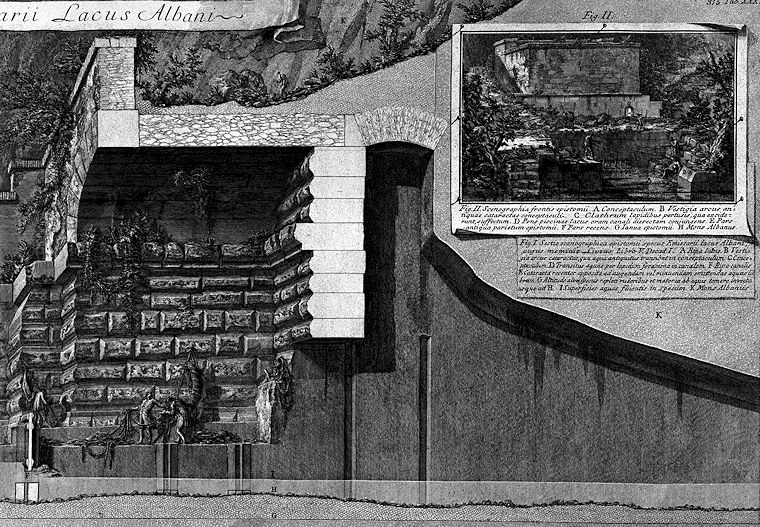Or se avremo riguardo alla natura, ed al fine degli acquedotti dei Romani . . . chi mai non vi ritroverà tutta la bellezza propria ad un tal genere di fabbrica? E chi non la ritroverà nelle cloache, nelle quali sembra ch'ella piuttosto abbondi che manchi?
Now if we have regard to the nature, and to the purpose of the Roman aqueducts. . . who will never find all the beauty proper to this kind of factory? And who will not find it in the sewers, in which it seems that it is rather abundant than missing?
267. Giovanni Battista Piranesi, Della magnificenza ed architettura de' romani (Rome, 1761).
268. Piranesi, Magnificenza, p. lii: "Si deduce, quanto sia meglio nell’architettura, quando la necessità non richieda altrimenti, il
servirsi di linee rette, e perpendicolari, in vece delle curve, e ravvolte, le quali, benchè il più delle volte soddisfacciano agli occhj, nondimeno egli è difficile, che possano usarsi senza scapito del'Architettura, ed anche della verita." Similarly, p. LI.
269. Ibid., p. lxxxi: "trascesosi una volta dal perpendicolo, e dalle linee definitive di ciascun membro, qual è quella cosa, che sul esempio dei Greci gli altri non han creduto di farsi lecita?"
270. Ibid., p. lxxxi: "Piacesse al cielo, che questa licenza di mescolare una parte coll’altra, fosse restata in Grecia. Ma a poco a poco si è introdotta in Italia con gran depravazione dll’architettura, ed anco a' dl nostri."
271. Ibid., p. lxxxi; "quell'impertinente giro di linee."
272. Ibid., p. xliv: "Laonde i Toscani credettero di dovere andar parchi nell'adornare la loro architettura, come anche i Dori. . ."
273. Ibid., p. xlii: "Tuttle le arti sono imitazioni della natura . . . non dee certamente andarne esente l'architettura, la quale parimente è nata dal vero. . ."
274. Ibid., p. xiii,
275. Ibid., p. xix, Cf. the quotation from Milizia, Part. II, note 239, above.
276. Piranesi, Magnificenza, p. xxiv.
| |
In the text of Della Magnificenza ed Architettura de' Romani (1761),267 Piranesi appears to be more modern than his Master of the dialogue. In this publication Piranesi takes his stand on the side of straight lines against curves, for the sake of "truth."268 Deviating from straight lines and uprights seems to him the first sin;269 the mingling or intertwining of the single features, the second step on the road to depravity. Intent upon defending the Romans, Piranesi charges the Greeks with these evil inventions.270 He uses that bold and pretentious language which soon he was to impute to the Novice, the rigorist,271 and preaches restraint in decoration as it was practiced by the Etruscan and Doric builders.272 His idol is that nebulous "truth" which he, like so many others, believed to be attainable by copying nature.273 He begins the display of Roman magnificence by discussing the cloacae, in particular the Cloaca Maxima,274 the structural merits of which he cannot praise enough.275 Long before Milizia, he recognized the specific beauty inherent in plain, utilitarian structures.
Or se avremo riguardo alla natura, ed al fine degli acquedotti dei Romani . . . chi mai non vi ritroverà tutta la bellezza propria ad un tal genere di fabbrica? E chi non la ritroverà nelle cloache, nelle quali sembra ch'ella piuttosto abbondi che manchi?276
To sum up: in 1765 Piranesi was more conservative than in 1761. His designs, too, became calmer in the course of the years, though the revolutionary element continued to play an eminent role in their composition.
| |
|
